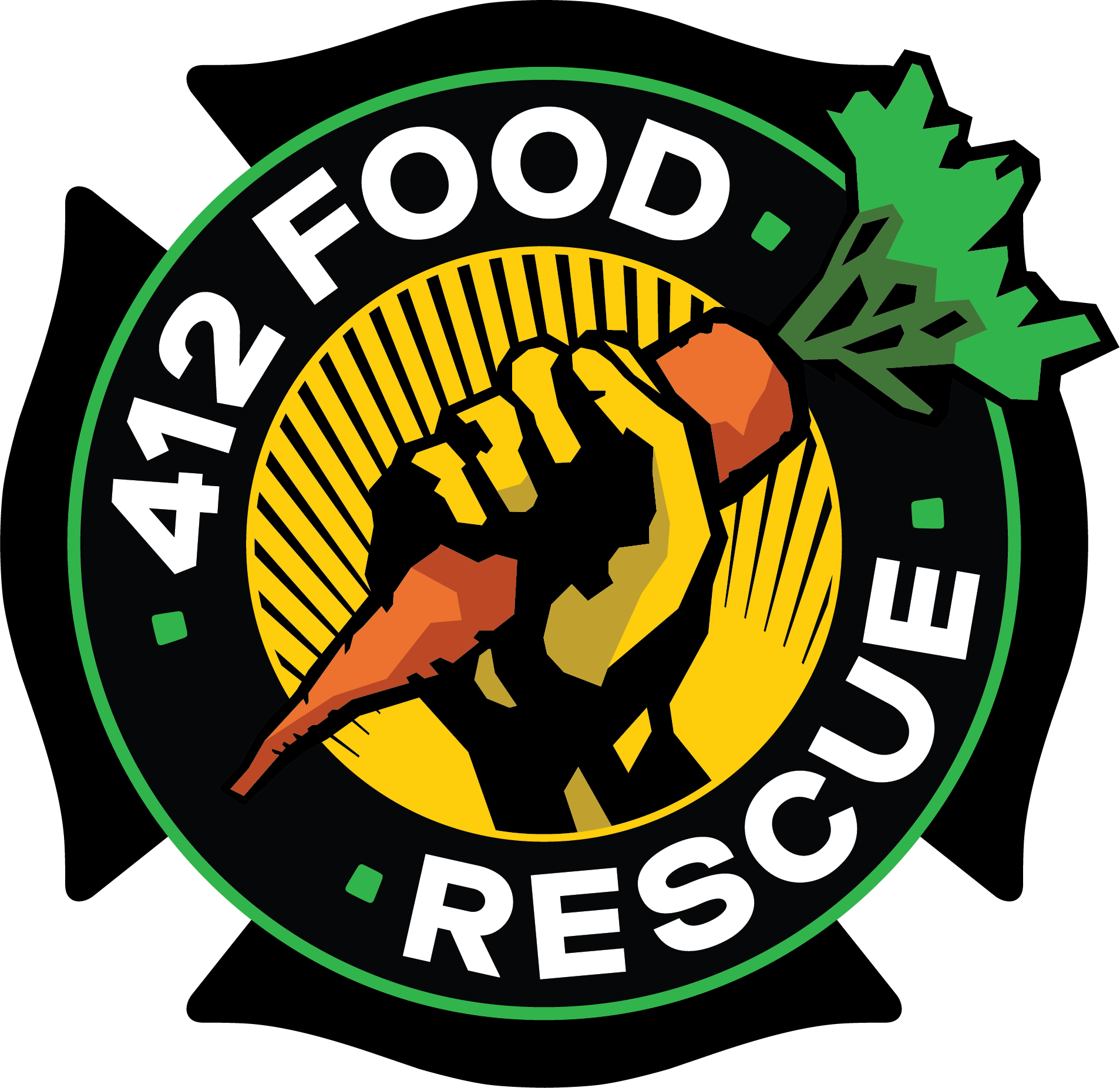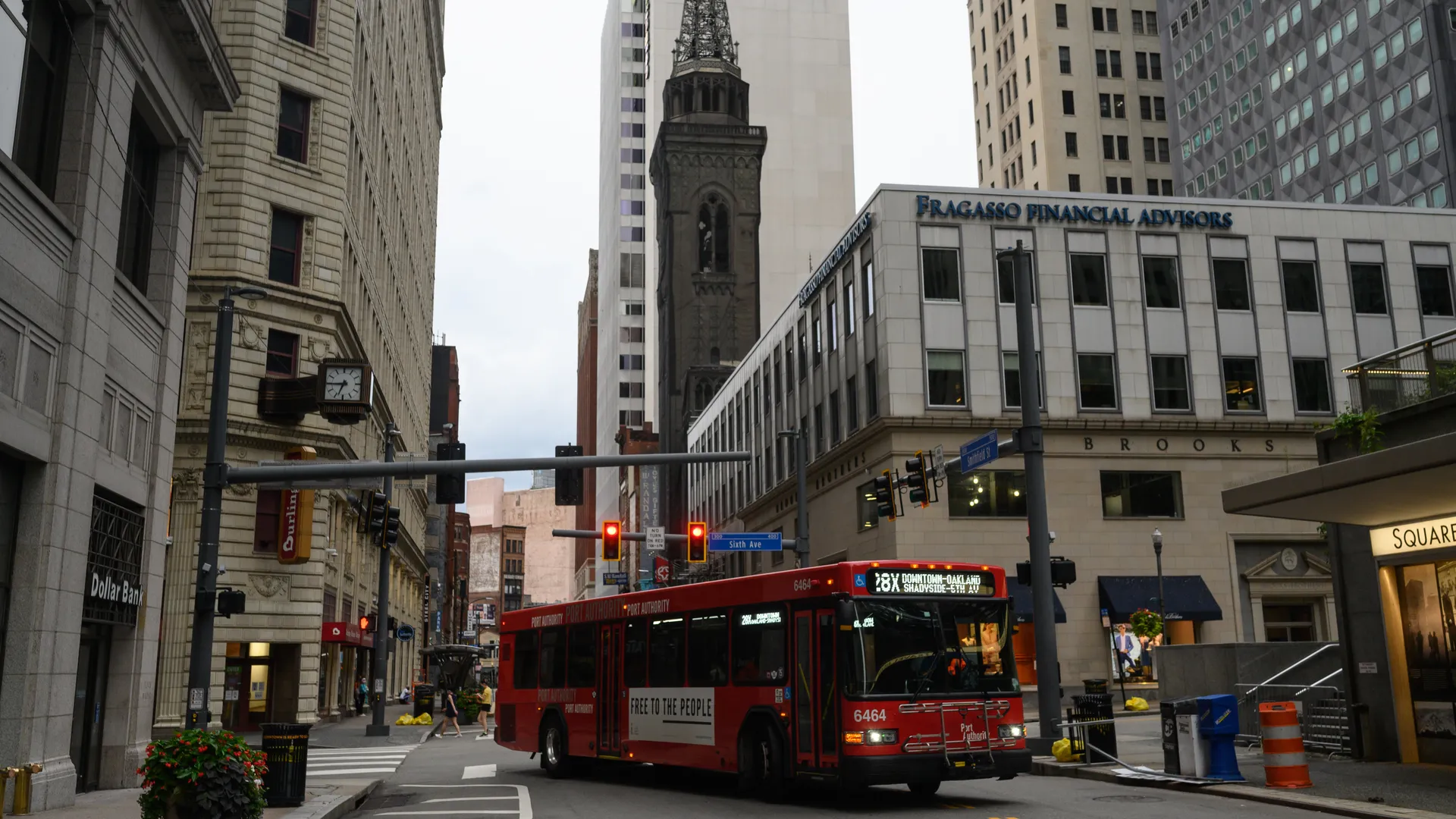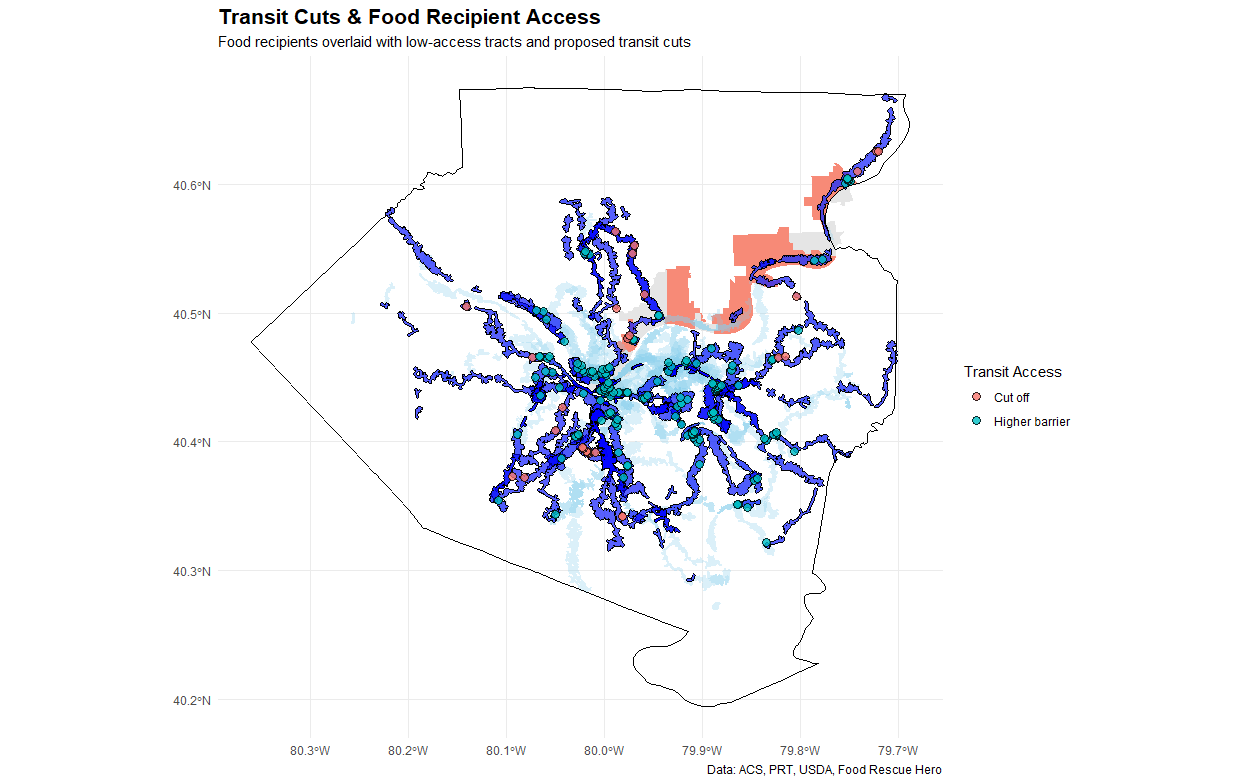WRITTEN BY:
Sean Hudson, MPA
Director of Data & Analytics
412 Food Rescue
Why Public Transit Matters
Make your voice heard!
PRT has a lot of ways you can help make the case for keeping public transit strong.
Check it out here →
Overview
Twenty-nine 412 Food Rescue food distribution partners will be completely cut off by proposed cuts and 141 severely impacted.
In order to assess the potential impacts of the proposed transit cuts on Pittsburgh’s food deserts, we utilized a combination of publicly available data sources and geographic analysis tools. The USDA Food Access Research Atlas provided insights into areas identified as food apartheid (low access, or low income and low access areas), while local transit route data allowed us to identify which communities would be most affected by the cuts.
We also examined demographic information from the American Community Survey (ACS) to better understand how many people could see the impact of the proposed cuts. In collecting data for the nonprofit partner food recipients along PRT lines, we were able to assess the impact to our extended food access network. This analysis aims to provide a clearer picture of the vulnerabilities in not only low-income neighborhoods but also neighborhoods with limited availability of food and the compounded effects of reduced transit options.
412 Food Rescue testified to the Board at the public hearings, presenting the following data and calling for funding for transit in order to avoid service cuts.
The Link Between At-Risk Populations and Public Transit Dependency
Transit access is not just a neighborhood issue. It’s about who depends on it. Research shows that individuals most at risk—seniors, people with disabilities, and those from lower-income backgrounds—are disproportionately reliant on public transit. These groups are more likely to lack private vehicles and often face limited mobility or financial resources, making public transportation a lifeline.
Though transit cuts can create substantial economic barriers, they can mean fewer or more expensive meals. People who rely on public transit may be forced to relocate to where transit is still available or face reduced access to essential services, including food. Knowing that transit-reliant populations are more vulnerable overall, we focused our analysis on food access within the areas affected by the proposed route eliminations.
We found that approximately 22,000 people live within walking distance of the routes slated for elimination. Of those, 9,239 live in census tracts identified as areas of food apartheid—including 3,859 in combined low-income and low-access areas. Public transit isn’t just a commuting issue—it’s a food security issue.
Mapping the Impacted Areas
Urban food apartheid describes places where a grocery store is more than a mile away. For residents in these areas, public transit may be the only practical way to reach grocery stores and food markets. The proposed service cuts risk deepening isolation for people in these communities, as well as creating substantial unseen costs due to the increased time and diminished convenience of purchasing food.
Our analysis shows that many areas already facing food access challenges will be completely cut off from bus service. For many residents, this means losing the only reliable or affordable way to get groceries. Even residents with alternative route options will face more transfers and longer, less convenient trips.
Impact on Nonprofit Food Recipients
As a food recovery organization, we’re particularly focused on how these changes will affect the nonprofit partners who help us distribute food to communities in need. In 2024, 412 Food Rescue facilitated the delivery of over 4.7 million pounds of food across the greater Pittsburgh region, we delivered over 1.2 million pounds of recovered food to 171 nonprofit partners located along the soon-to-be-impacted bus routes–equivalent to 1 million meals.
Of these:
- 29 organizations would become completely inaccessible via bus.
- 142 organizations would see reduced access for clients, staff, or volunteers.
These aren’t just numbers—they represent places where food is needed and where it’s being used. Among the over 1.2 million pounds delivered to these organizations in 2024, more than 215,000 pounds would become entirely unreachable by bus if these cuts go into effect.
Transit isn’t just a transportation issue. It’s a food delivery issue. It’s a community support issue. And for thousands of people across Allegheny County, it’s a basic human need.
The data is clear: proposed transit cuts in Pittsburgh will have devastating ripple effects far beyond missed commutes. They threaten to widen the gap in food access, isolate already vulnerable populations, and undermine the efforts of hundreds of nonprofits working to keep our communities nourished.
At 412 Food Rescue, we see firsthand how public transit connects people not just to food, but to dignity, health, and opportunity. As decisions are made about the future of transit in Allegheny County, we must keep equity at the forefront. Preserving and expanding public transportation is essential infrastructure for food security—and we can’t afford to ignore it.









